Factors Causing Variations in Salinity
Ocean salinity variations result from five primary physical processes that work simultaneously across global marine systems. Evaporation increases salinity by removing pure water while leaving dissolved salts, with subtropical regions around 30°N and 30°S showing maximum levels due to clear skies and descending air currents. Precipitation and freshwater input from rivers like the Amazon, Congo, and St. Lawrence reduce salinity through dilution, creating distinct regional patterns. Prevailing winds redistribute saline waters through trade wind systems and upwelling phenomena, while ocean currents continuously mix surface and subsurface waters. These interconnected factors create salinity ranges from 2‰ in the Baltic Sea to 41‰ in the Red Sea, directly influencing marine ecosystems, thermohaline circulation, and global climate patterns.
Ocean salinity represents one of the most important physical properties of seawater, with significant implications for marine ecosystems, ocean circulation patterns, and global climate systems. Understanding the complex interplay of factors that influence salinity distribution provides crucial insights into oceanographic processes and their environmental consequences.
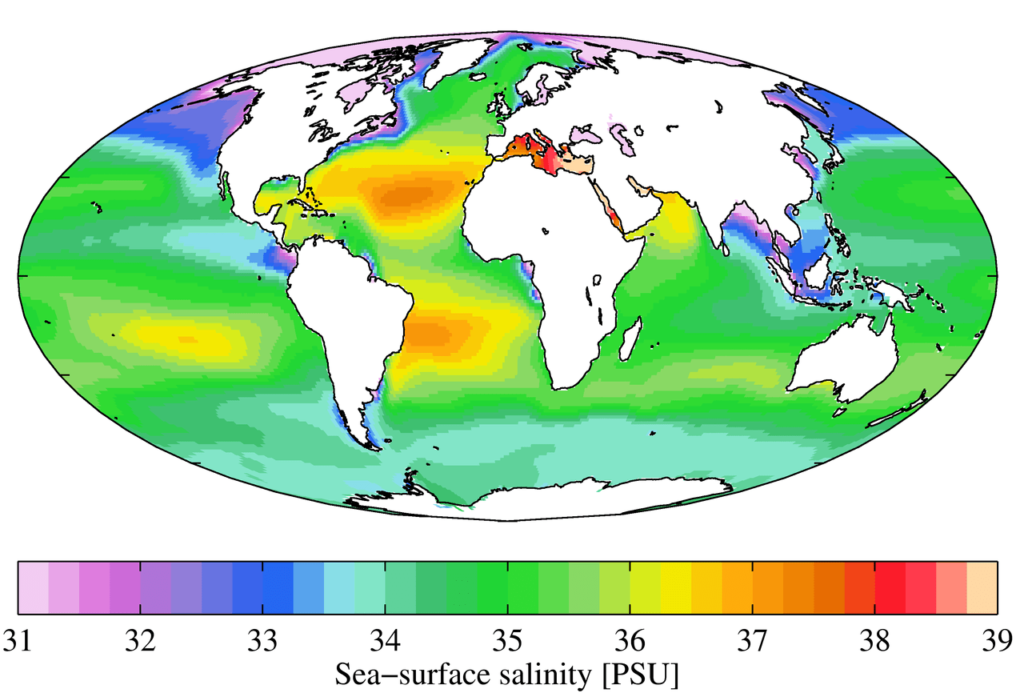
As noted earlier, the average salinity of the ocean water is about 35‰. However, there are regional variations in the salinity of the surface waters. Besides horizontal variations there are vertical variations as well in the salinity distribution in the oceans. It is to be noted that the variations in salinity are the result of certain physical processes like evaporation, precipitation and freezing.
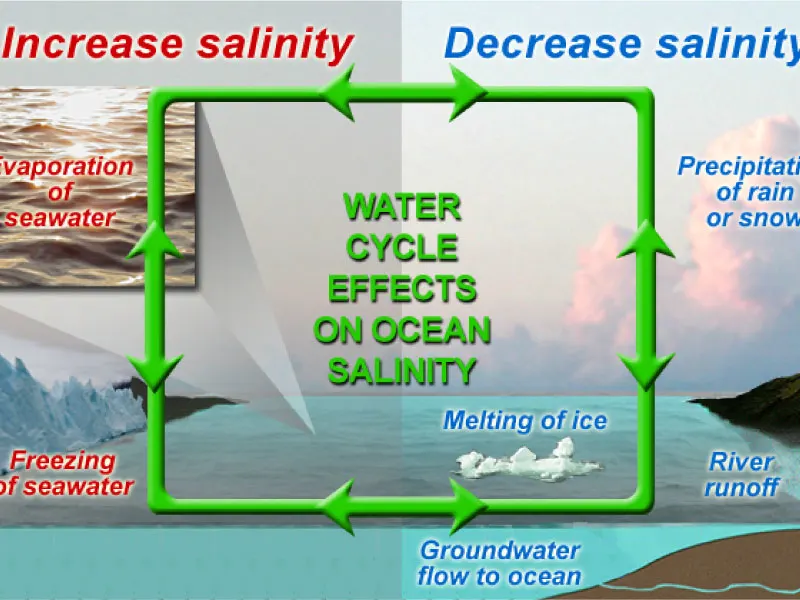
Salinity decreases in case fresh water is added to the ocean water. It may be through any of the processes such as precipitation, influx of fresh water by rivers, surface runoff or the melting of snow and ice etc. On the other hand, if fresh water is withdrawn from the sea-water leaving behind solid substances, salinity registers an increase.
Primary Physical Processes Affecting Salinity
In fact, the amount and distribution of salinity is controlled by a number of factors which are as follows:
- Rate of evaporation
- Supply of clean and fresh water through precipitation
- Supply of fresh water by rivers
- Prevailing winds
- Mixing through movement of the ocean water
Rate of Evaporation
The process of evaporation is certainly the most important factor that controls the distribution of the surface salinity. As we are aware, through the process of evaporation pure water is taken out as water vapour and salt is left behind. Thus it is clear that the conditions which favour the higher rate of evaporation will naturally produce areas of high surface salinity.
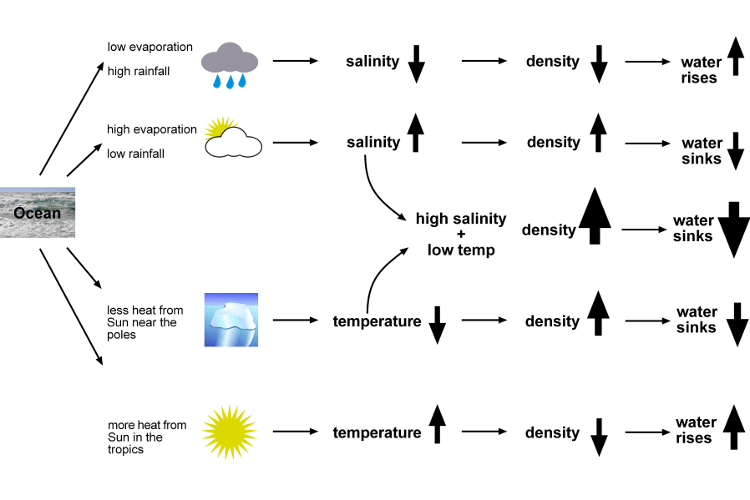
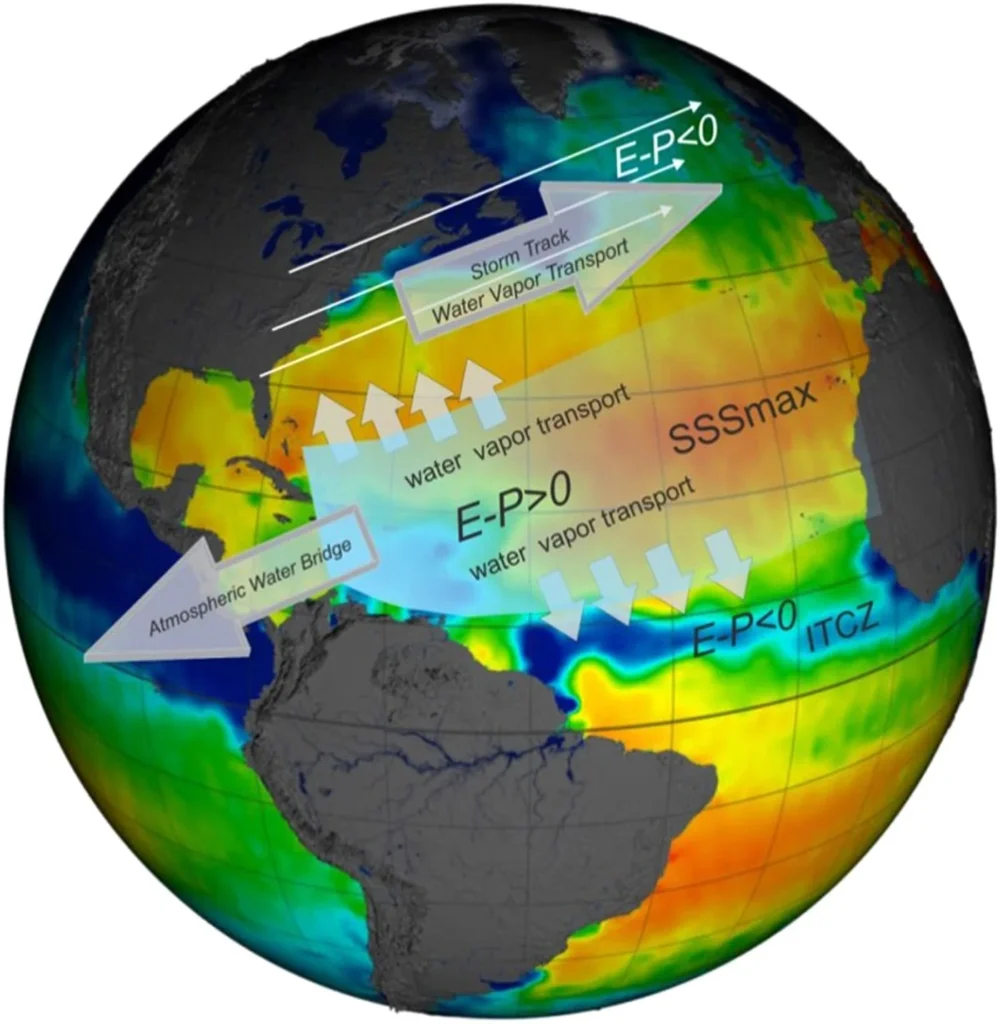
Evaporation is controlled by temperature, relative humidity and the instability or stability in the lower layers of the atmosphere. In the equatorial region, the cloudiness and high relative humidity retard evaporation. But the subtropical regions near 30°N and S record the highest salinity. The reason is simple. In these regions the clear skies and descending air currents favour a very high rate of evaporation. However, from these regions of maximum salinity, there is a gradual decrease in sea-water salinity towards the equator and the poles.
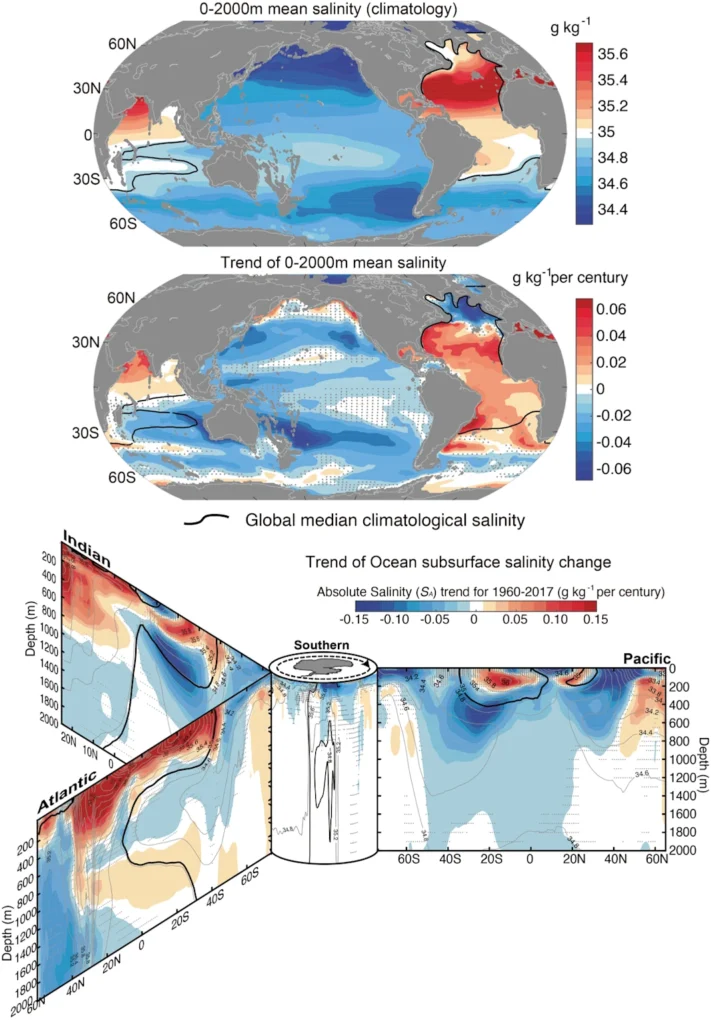
Salinity is higher in the middle-latitude regions than in the polar regions mainly because of warmer ocean temperatures and greater evaporation there (mid-latitudes). Due to the extremely low evaporation rates, on the contrary, the lowest salinity is found in polar areas. Besides, during the summer season, the polar area ice melts and fresh water is added to the sea-water. Thus, the salinity decreases in the polar region.
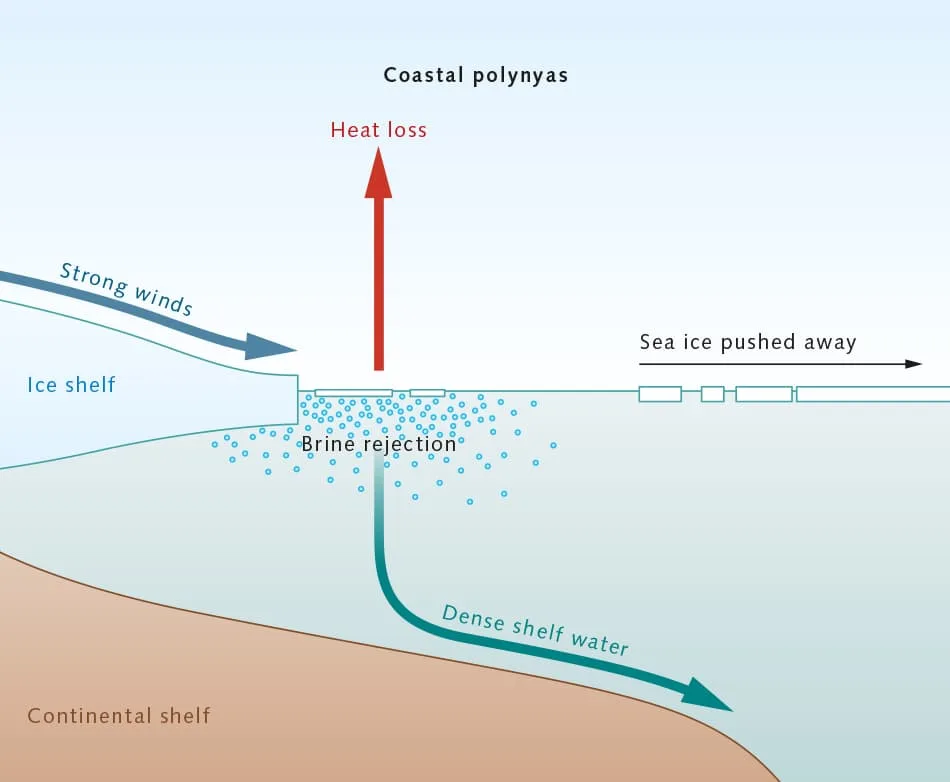
Supply of Fresh Water Through Precipitation
In humid regions where rainfall is heavier, fresh water tends to dilute the sea-water and reduce its salinity. On the other hand, in arid and semi-arid areas where evaporation exceeds precipitation, there is greater concentration of salts so that the salinity is high. Despite uniformly high temperature throughout the year, heavy precipitation dilutes the surface water so that the salinity is relatively lower.
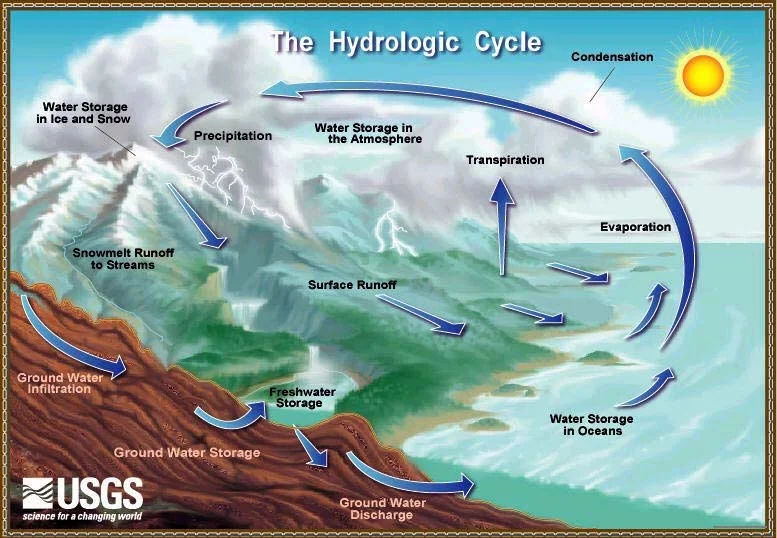
In the polar and sub polar regions thick layers of snow and ice are deposited on the surface of the earth due to heavy snowfall. Melting of sea-ice and ice-bergs in the middle-latitude regions adds fresh water to the sea, and thus by diluting it reduces its salinity. Keeping in mind the significance of evaporation and precipitation Wust has worked out an equation which clearly shows the inter-relationship between salinity and evaporation plus precipitation:
S=34.60+0.0175(E–P)
when S stands for salinity, E for the rate of evaporation, and P stands for the total amount of precipitation.
Supply of Fresh Water by Rivers
The influx of fresh water by river is another important factor which brings down the degree of salinity in ocean water. Rivers such as, the Congo, Niger, St. Lawrence, Ob and Amazon etc. carry a large supply of fresh water to the oceans in which they fall. Due to the addition of fresh water, salinity near the mouths of rivers decreases.
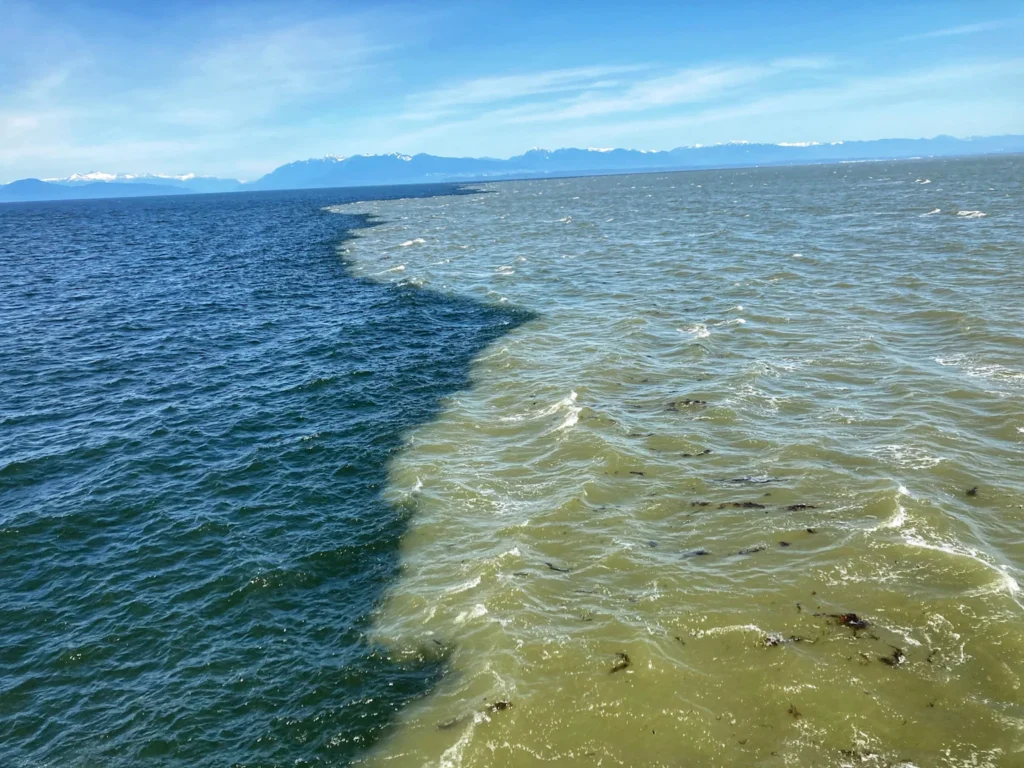
It is estimated that the rivers pour down about 27000 km³ of the rain water every year from over the continental surface into the oceans. Thus, keeping in view the total area of the surface of ocean waters, rivers supply about 7.6 cm of fresh water per year to the oceans. However, the effect of fresh water carried by the rivers to the oceans is limited to the coastal areas only.
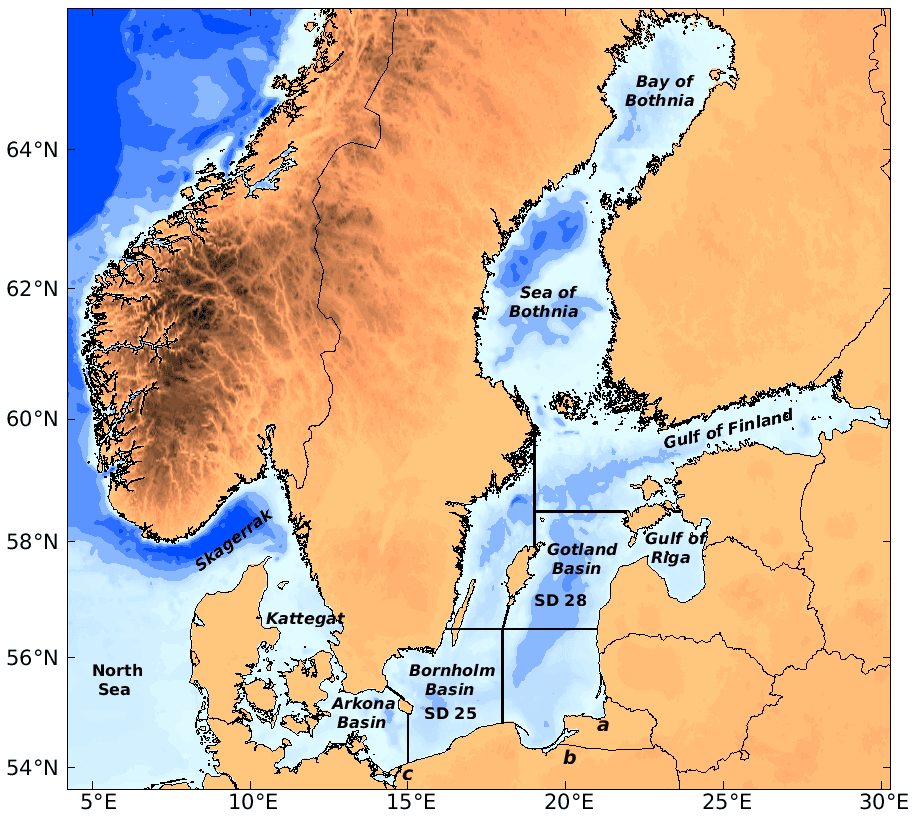
Salinity in the coastal areas of the North Sea from Holland to East Anglia is 34.2‰, while offshore in the open sea it is 35‰. In the Black Sea over the greater part the surface salinity varies from 18 to 18.5‰ due to the influx of fresh water carried by the rivers. Similarly, in the Baltic Sea lying in the colder region evaporation is comparatively low and a large amount of fresh water is poured down by numerous rivers of Sweden and northern Russia. Thus, in the Gulf of Bothnia, the northern part of the Baltic Sea the salinity is often less than 2‰, and in spring the water is almost fresh.
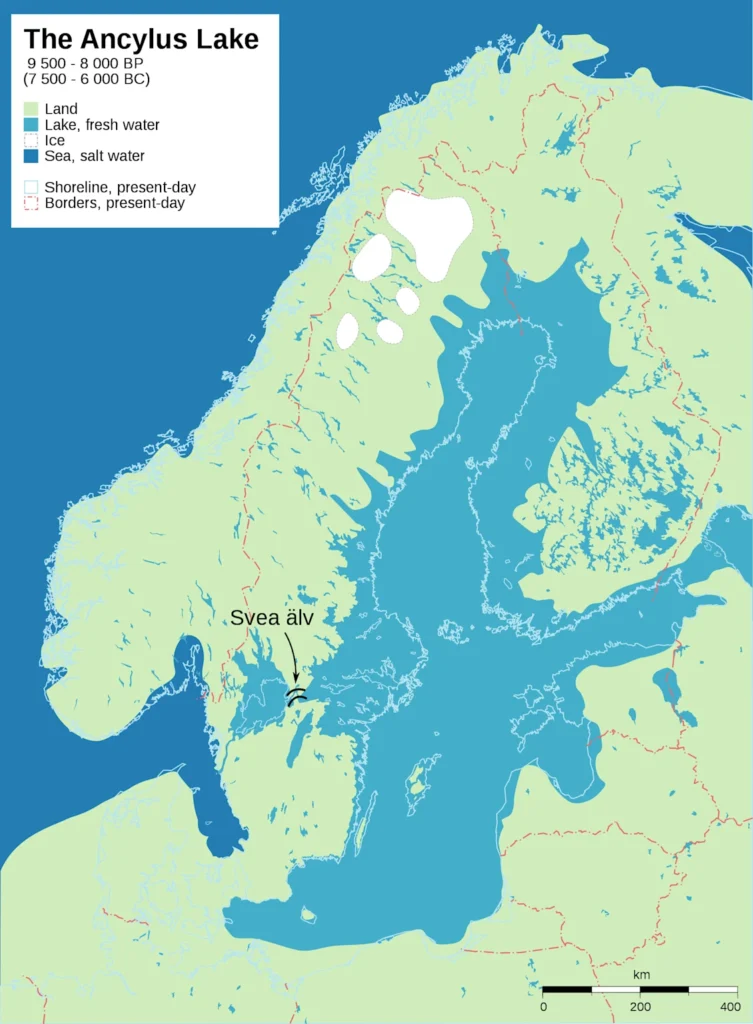
Prevailing Winds
Winds blowing over the sea surface play an important role in the distribution of surface salinity. For example, the trade winds in both the hemispheres transport warm and saline water from the eastern part of the oceans towards the western part raising the degree of salinity there. To compensate for the loss of the top layers of the ocean water there, the cooler and less saline water from the deeper parts of the ocean comes up. This phenomenon is called upwelling.
Now, it is clear that these prevailing winds called “the trade winds” go a long way in producing salinity differences along the eastern and western shores of the oceans. Similarly, the intrusion of warm and saline water of the Gulf Stream is the most important causative factor in raising the salinity in the northeast Atlantic Ocean.
Besides, blowing of winds on the sea surface exerts stress, and each moving layer of water exerts a stress on the next underlying layer. Since it causes mixing of the different layers of water, it is enough to appreciate the dominant role of prevailing winds as a controlling factor in the distribution and amount of salinity.
Mixing Through Ocean Water Movement
The oceans are always in a state of restlessness. They actually show three distinct types of movement i.e. tides, currents and waves. Because of these major movements there is a continuous mixing of the surface waters with those of the subsurface layers of the oceans. This fact alone is an important factor in bringing about the uniformity of salinity in the surface layer of the oceans.
Currents, warm as well as cold, play a major role in the distribution of salinity. Warm ocean currents carry warm and more saline waters towards the polar regions, whereas the cold currents drive the cold and less saline waters from the higher to lower latitudes. Trade winds as well as the westerlies bring about salinity differences on the eastern and western parts of the oceans.
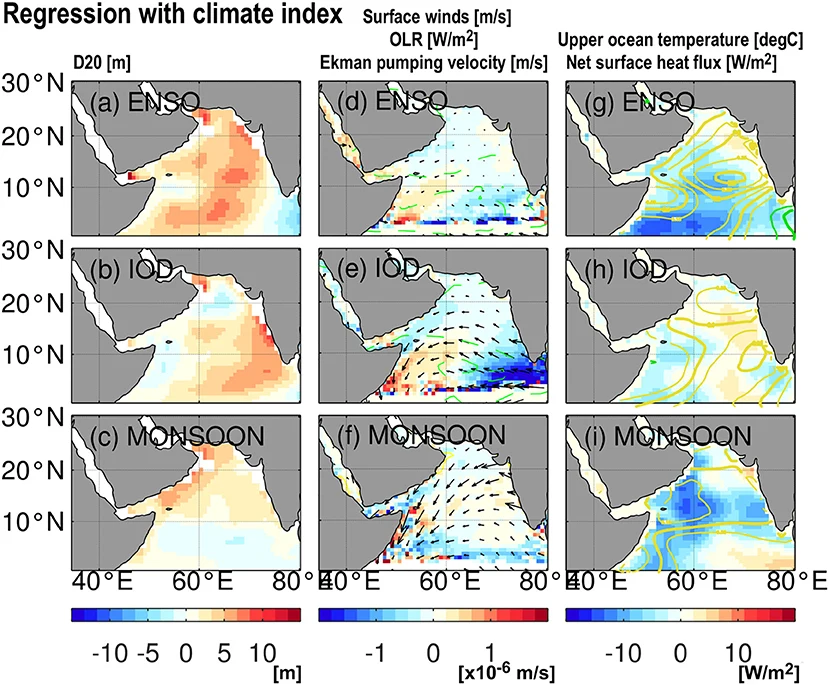
However, in the Indian Ocean, the monsoon system of winds causes the seasonal variation in the distribution of salinity.
Summary of Salinity-Affecting Factors
Table: Factors increasing or decreasing the surface salinity
| Increasing Salinity | Decreasing Salinity |
|---|---|
| Evaporation | Precipitation |
| Ice formation | Ice melting |
| Surface circulation (advection of more saline water) | Surface circulation (advection of less saline water) |
| Mixing with more saline deep water (turbulence and convection) | Mixing with less saline deep water (turbulence and convection) |
| Solution of salt deposits (Gulf of Suez, Suez Canal, Gulf of Akaba) | Inflow of fresh water from the land (rivers, glaciers, icebergs) |
Conclusion
The distribution of ocean salinity represents a complex interplay of multiple environmental factors working simultaneously across different spatial and temporal scales. Evaporation emerges as the primary driver of high salinity regions, particularly in subtropical zones around 30°N and 30°S where clear skies and descending air currents create optimal conditions for water vapor removal. Conversely, precipitation and freshwater input from rivers, ice melting, and surface runoff serve as the principal mechanisms for salinity reduction, creating distinct regional patterns observable in areas like the Baltic Sea, Black Sea, and near major river mouths.
The dynamic nature of ocean currents and wind patterns ensures continuous redistribution of these salinity variations, while seasonal changes in monsoon systems and polar ice conditions introduce temporal variability to the overall distribution patterns. Understanding these processes proves essential for comprehending broader oceanographic phenomena, climate patterns, and marine ecosystem dynamics, as salinity variations directly influence water density, circulation patterns, and the overall health of marine environments.
Reference: All images and content are taken from Essentials of Oceanography by Alan P. Trujillo and Harold V. Thurman, 12th Edition.
